Best Fujifilm camera 2025: top mirrorless and compact cameras, retro and otherwise
We round up the best Fujifilm cameras you can buy today
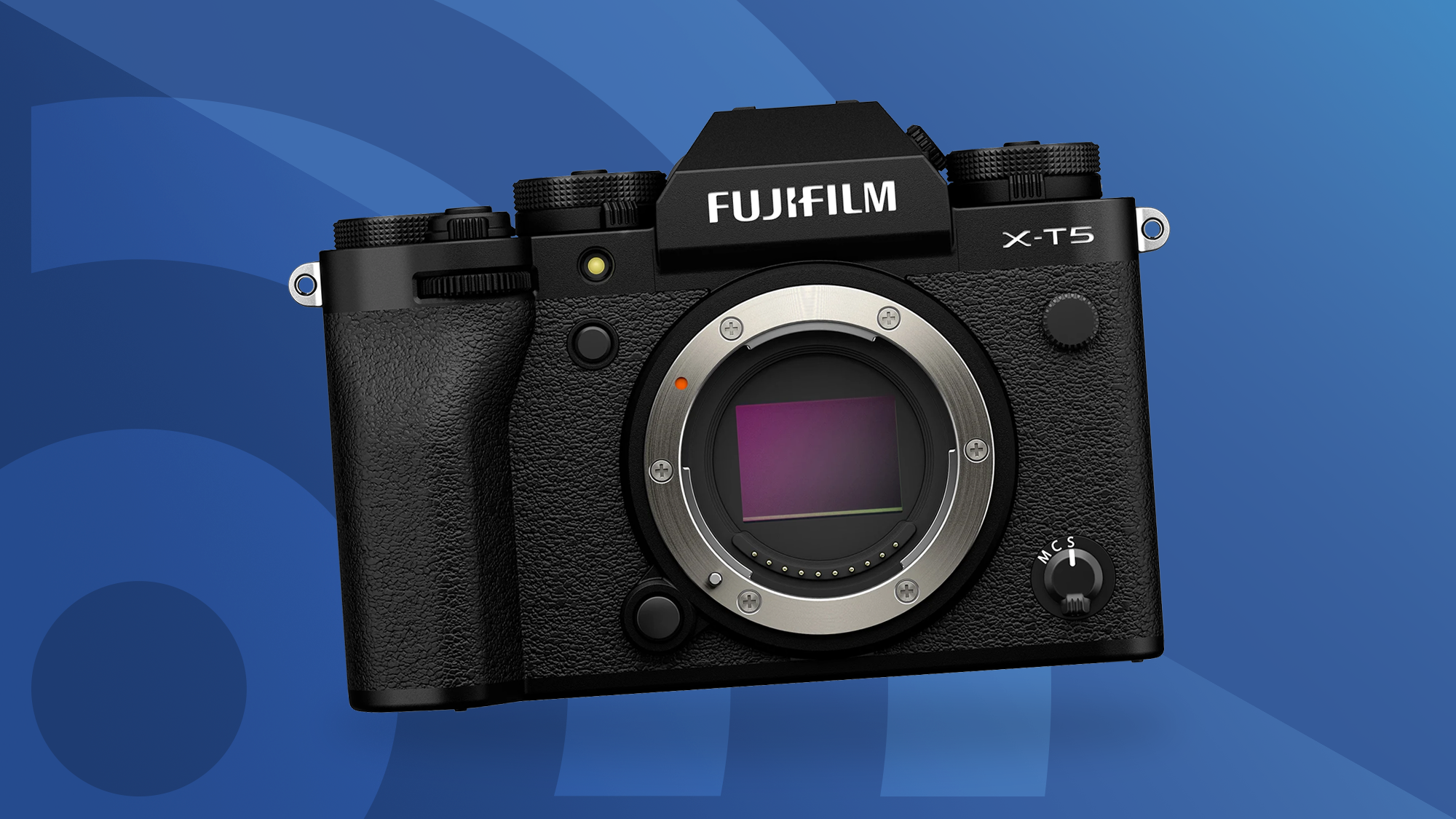
With a combination of clever strategy and viral popularity, Fujifilm continues to hit winners in almost every category. That includes everything from beginner-friendly compacts with bags of retro style, to medium format flagships capable of 102MP stills. Our expert team has reviewed every Fujifilm camera of note. To help you find the right one, we’ve broken down our recommendations here.
Choosing a Fujifilm camera comes down to your budget and experience level. If we had to pick just one, it would be the fantastic Fujifilm X-T5. It’s a superb choice for enthusiasts: with a capable 40.2MP sensor, impressive subject-tracking autofocus and useful in-body image stabilization, it squeezes top-spec smarts into a lightweight, retro body. We think it’s a joy to shoot with.
There’s a lot more to Fujifilm’s line-up than just the X-T5 and even the viral X100VI, though. Below, you’ll find our honest feedback on a full range of Fujifilm cameras. Each has been tested out in the real world, to assess everything from usability to performance, then selected for a specific kind of user. So whether you’re new to Fujifilm or an established fan, you should find a camera in this guide to fit your requirements.
Top 3 picks
The summary below will give you an instant overview of the best Fujifilm cameras for every type of photographer, together with shopping links to recommended retailers. When you find one that ticks the right boxes, you can follow the links beneath each entry to jump down to our full write-ups.
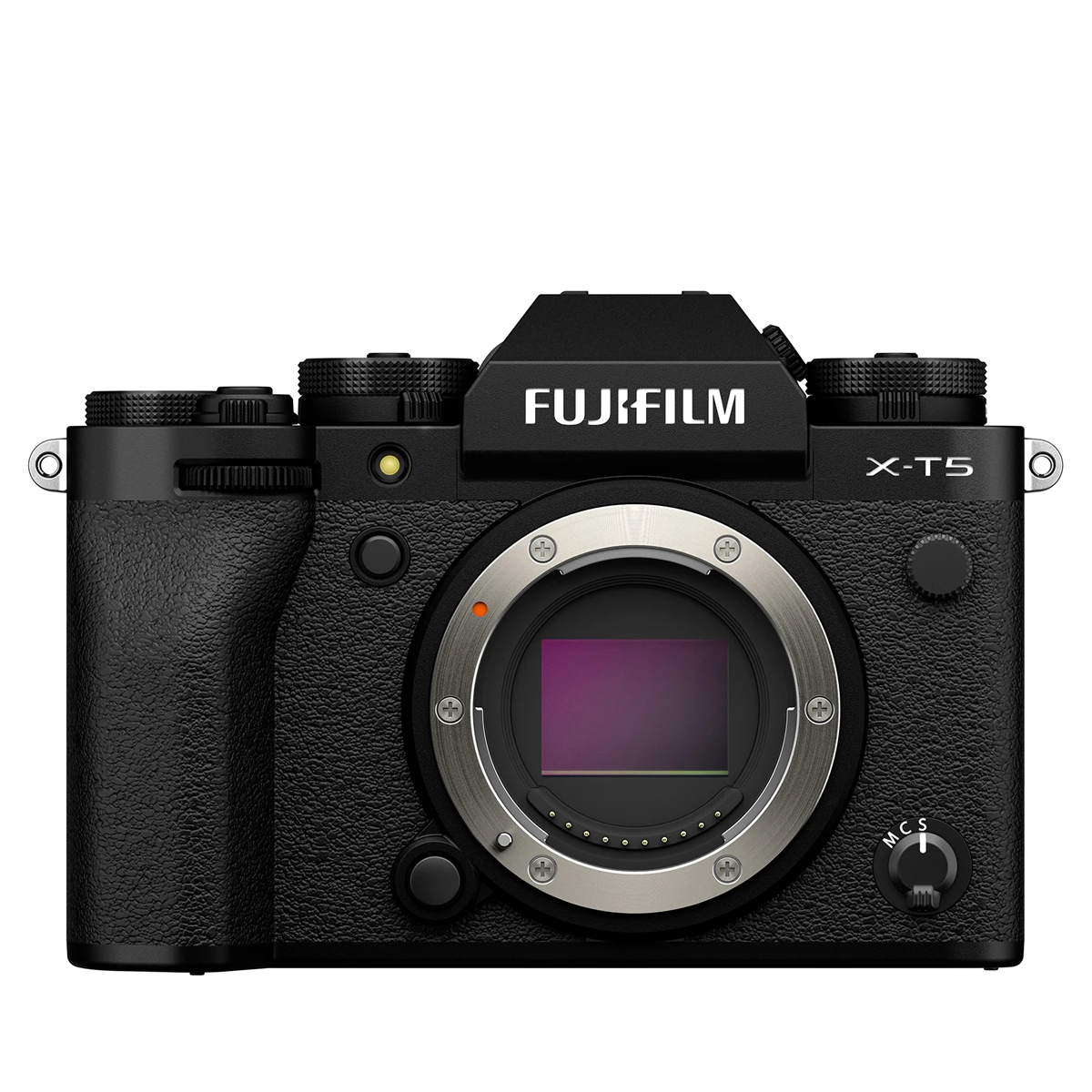
The best overall
With flagship specs and a lightweight body, the X-T5 is a fantastic camera for hobbyists who want something fun and rewarding to shoot with.
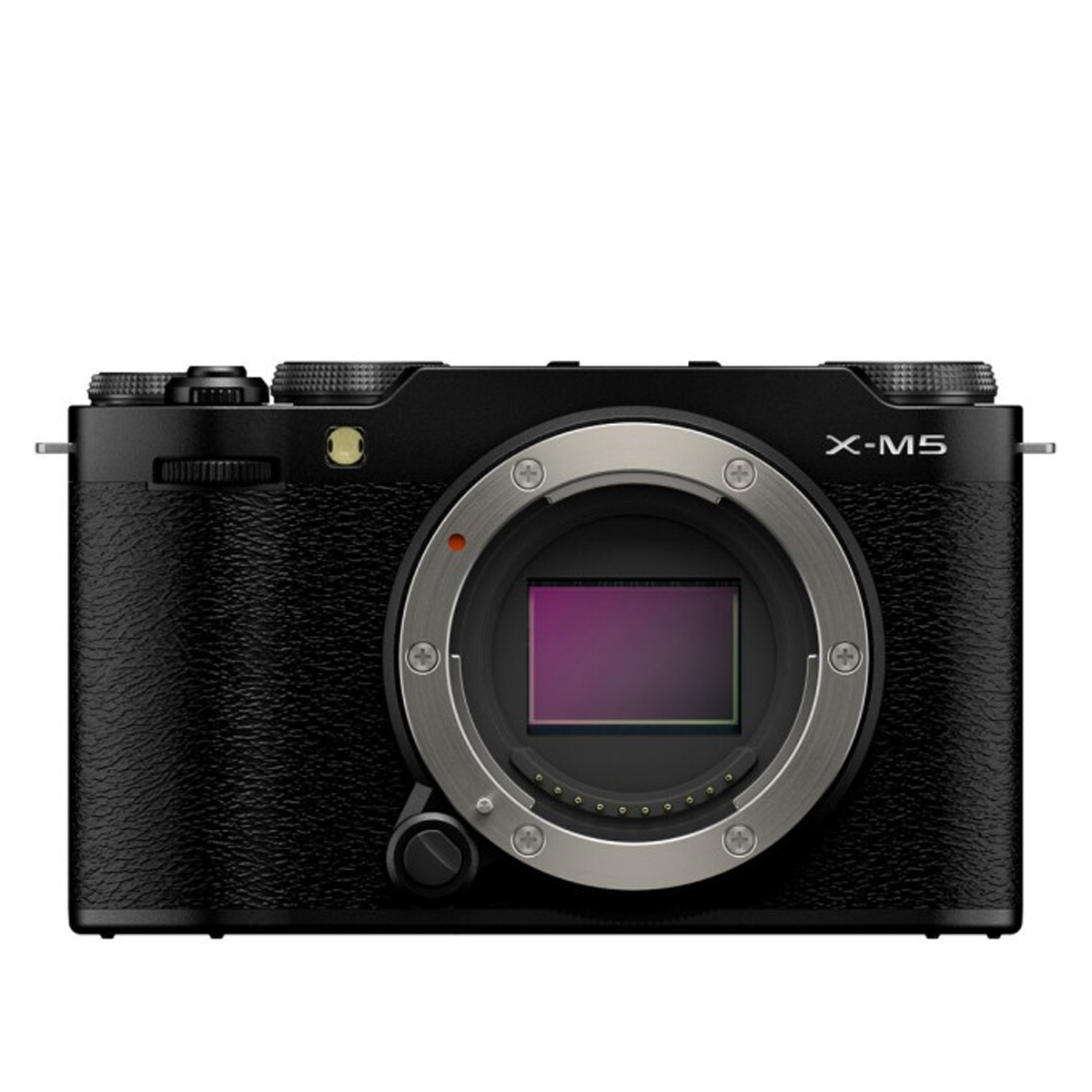
The best for beginners
An entry-level mirrorless hybrid with stacks of video features, the tidy X-M5 makes it easy for beginners to shoot quality 6K footage.
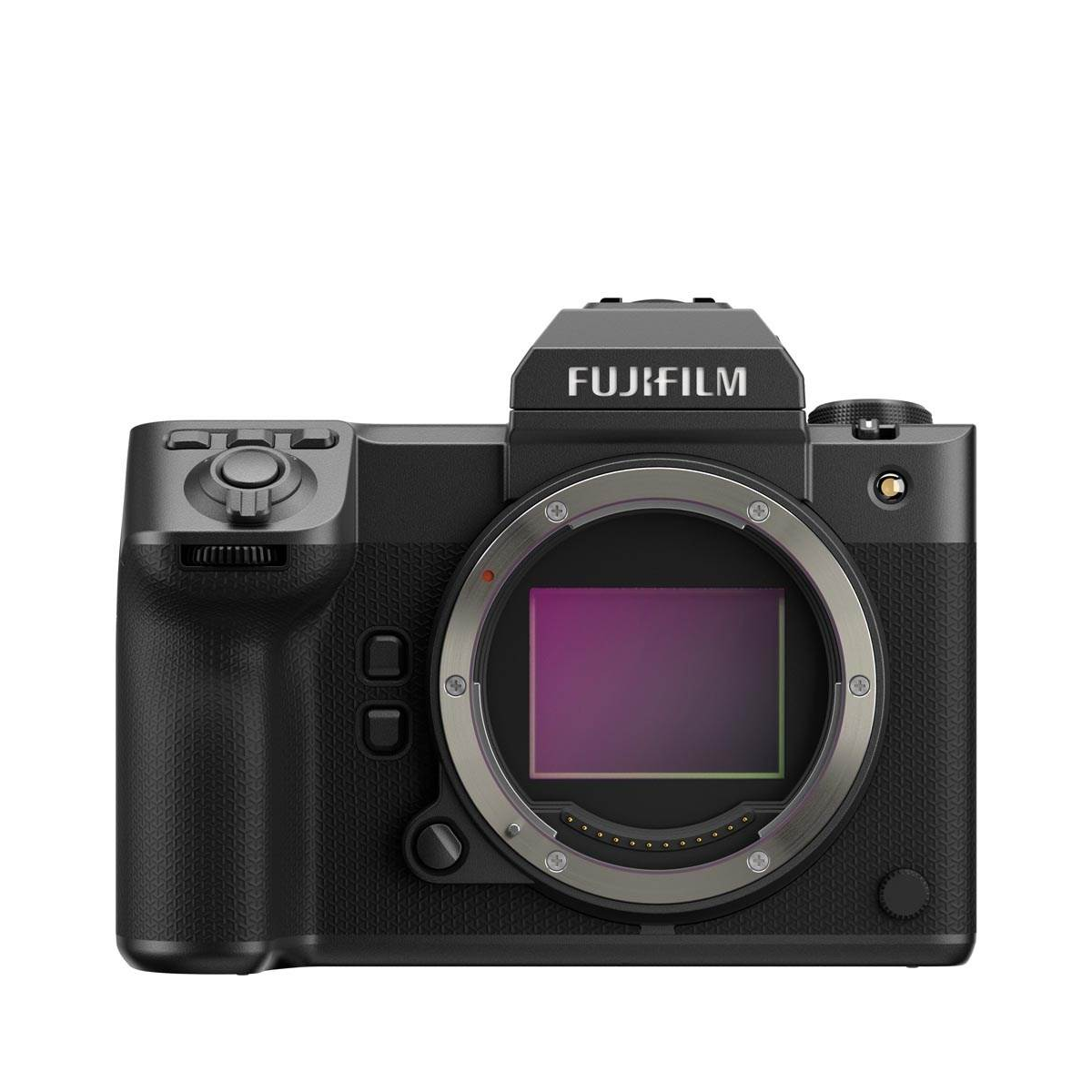
The best medium-format model
If you can afford it, this is the most powerful medium-format you can buy, period, delivering ultra-high-resolution images and speedy performance.
Best by use-case
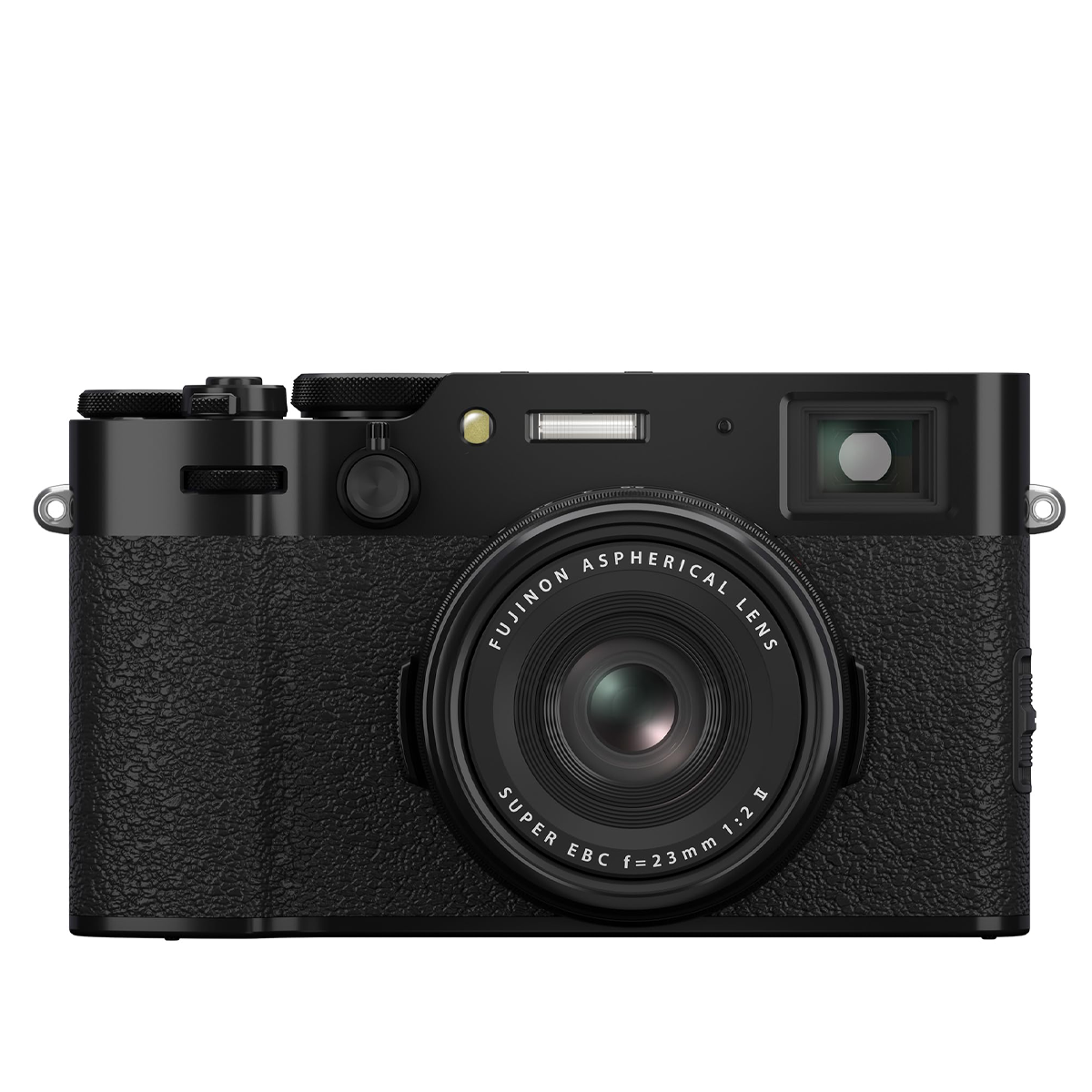
The best premium compact
A premium compact that’s perfect for the street, the X100VI wins with its versatile 40MP sensor, in-body image stabilization and popular retro look.
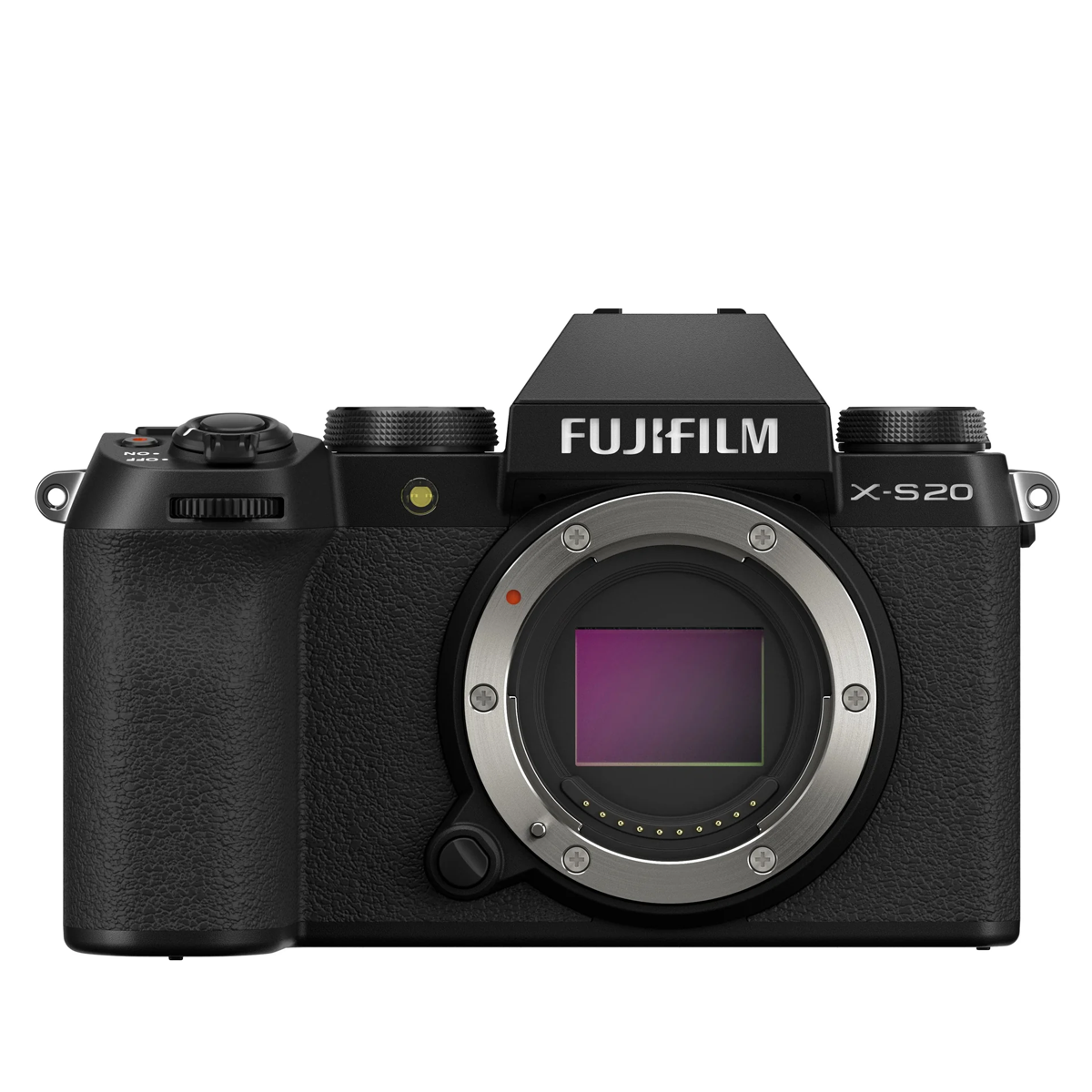
The best for enthusiasts
A fantastic tool for content creators to grow with, the X-S20 combines excellent handling with improved subject tracking and impressive video specs.
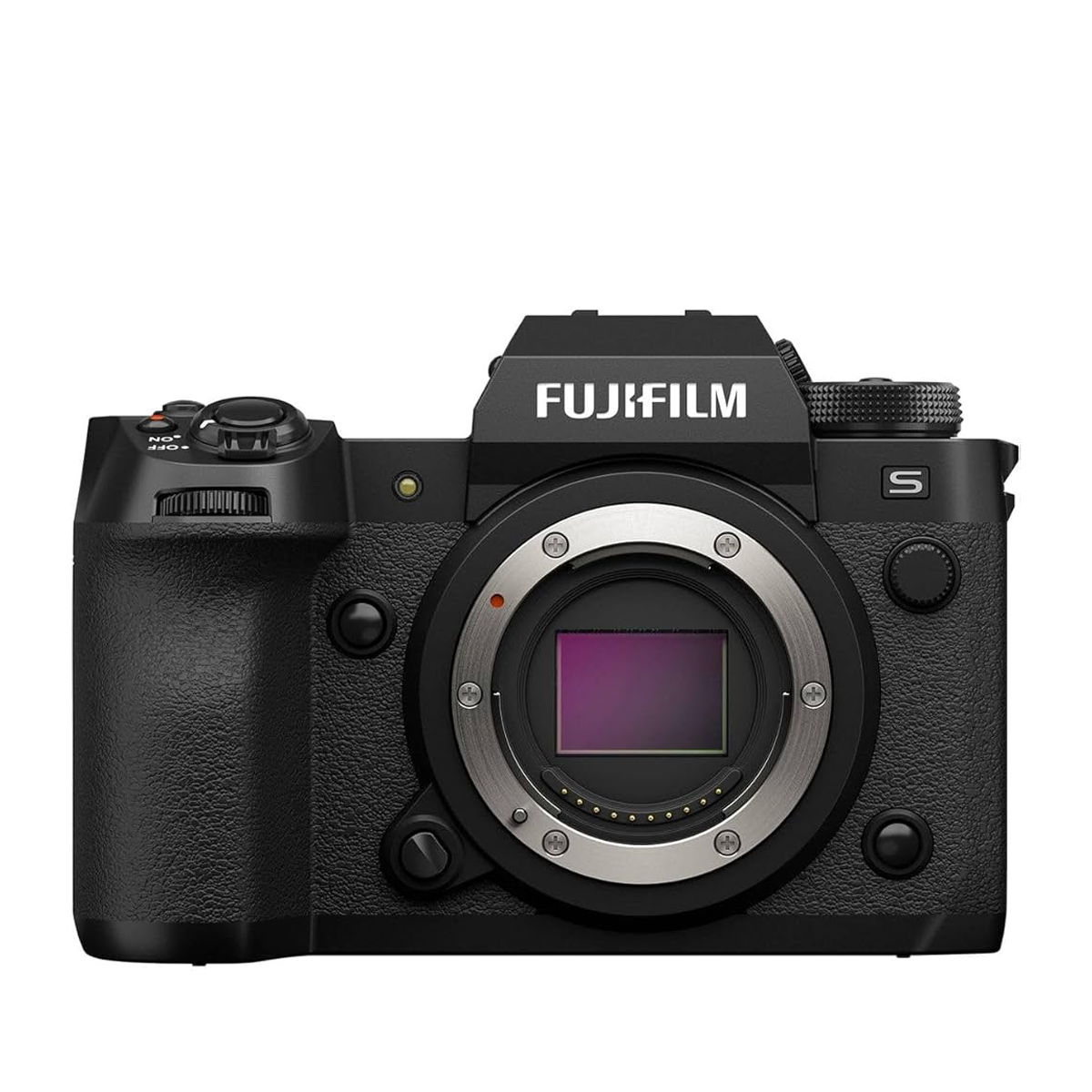
The best for speed
With a stacked APS-C sensor capable of superb burst speeds and rapid AF tracking, the X-H2S is a speed machine with solid video chops to boot.

Tim is TechRadar's Cameras Editor. He has more than 15 years' experience in the photo and video industry. He's worked as both a journalist and a photographer, giving him a deeply technical knowledge and practical understanding of what makes a good camera. He's shot with all kinds of Fujifilm cameras during his career, using them to cover a range of scenarios, including street portraits, sports photography and video work.
The best Fujifilm cameras in 2025
Why you can trust TechRadar
Below you'll find full write-ups for each of the best Fujifilm camera picks in our list. We've tested each one extensively, so you can be sure that our recommendations can be trusted.
The best Fujifilm camera overall





Specifications
Reasons to buy
Reasons to avoid
Fujifilm X-T5 sample images





✅ You want a tidy stills camera: With retro dials, DSLR-style controls and a relatively compact design, the X-T5 is a joy for photographers to shoot with every day.
✅ You want an alternative to full-frame: Smaller and more affordable than the best full-frame cameras, the X-T5 hits the sweet spot, with an APS-C sensor that produces quality stills.
❌ You shoot a lot of video: The X-T5 is good for recording occasional clips, but it’s designed for photography first, which makes hybrids like the X-S20 better for videographers.
❌ You want an action camera: With a limited buffer for burst shooting and an autofocus system that doesn’t match up to Canon and Sony’s best, the X-T5 isn’t a sports star.
If you’re a photographer in search of a dependable, portable stills camera to shoot with every day, we think the X-T5 ticks the right boxes. In essence, it squeezes the specs of the powerful X-H2 into a relatively compact, retro-style body, complete with DSLR-style controls and dials. In our review, we found it a pleasure to shoot with. It has the same 3.69 million-dot EVF as the X-T4, but we found the switch to a three-way tilting screen an improvement.
We also highly rated image quality out of the X-T5, praising it as “among the best you can find on an APS-C camera”. The combination of a 40MP sensor and in-body image stabilization produces excellent results. It can also shoot lovely 6.2K/30p footage, although video is an extra rather than a focus: there’s a 1.23x crop and no headphone jack. You will get better noise handling and autofocus performance from the full-frame Sony A7 IV, but the X-T5 is one of our favorite APS-C alternatives for photography.
Read our in-depth Fujifilm X-T5 review
The best Fujifilm camera for beginners





Specifications
Reasons to buy
Reasons to avoid
Fujifilm X-M5 sample images





✅ You want affordable 6K video: Despite its entry-level price tag, the X-M5 can shoot open gate 6K footage in 10-bit with color profile support, making it excellent value.
✅ You want a compact daily camera: The X-M5 is a tiny, lightweight yet capable camera, making it a great everyday choice for beginners, as well as a strong second camera option.
❌ You shoot stills first and foremost: The X-M5 delivers quality images with its proven 26MP sensor, but video is where it excels, with no viewfinder for photographers.
❌ You have big hands: The X-M5’s tiny design can feel a little too small at times, with controls clustered quite tightly, making it easy for big hands to hit the wrong ones.
A tiny yet highly capable entry-level mirrorless camera for aspiring content creators, we think the X-M5 is the top Fujifilm model for beginners with an interest in video. It’s one of the lightest mirrorless cameras on the market, and in testing we actually found it too small at times, with controls that are easily knocked by big fingers. Still, those proportions make it fantastic camera to walk around with, and we appreciated several of its neat design touches: the mic port, for example, sits above the touchscreen for easy connection to a hot-shoe pick-up.
You don’t get in-body image stabilization, which might limit its usefulness for run-and-gun filmmaking. And while the X-M5 produces decent stills with its proven 26MP sensor, the X-T30 II is a better choice if you’re primarily a photographer. In every other respect, the X-M5 punches above its weight for videographers: it captures sharp 6K video with color-rich 10-bit support, while open gate recording gives extra flexibility when cropping clips for social media. Altogether, we think it represents great value.
Read our in-depth Fujifilm X-M5 review
The best medium-format Fujifilm camera





Specifications
Reasons to buy
Reasons to avoid
Fujifilm GFX100 II sample images





✅ You want the best possible image quality: With a 102MP medium-format sensor, the GFX100 II sets a new standard for image quality, powered by Fujifilm’s best-ever processor.
✅ You want an accessible medium-format: With the smaller form factor of the GFX100S, plus a removable vertical grip and EVF, the GFX100 II makes medium format more convenient.
❌ You don’t need massive detail: If your work doesn’t demand 102MP stills and 8K video, the GFX100 II will be overkill, with much better value available from full-frame rivals like the Sony A7R V.
❌ You a professional filmmaker: The GFX100 II has powerful video specs, including 8K video, but it’s designed for photography first and lacks pro essentials such as an XLR input.
Medium-format isn’t for everyone. But if you’re in the market for maximum resolution, we think the GFX100 II is the most powerful and usable medium-format camera you can buy. Naturally, it’s bigger and heavier than a full-frame camera, and attracts a significant premium. But based on our in-depth tests, it delivers truly superb image quality, as well as outstanding 8K video. It also eliminates the compromize between resolution and performance: it can shoot 102MP RAW stills at 8fps with reliable subject detection autofocus enabled.
In the GFX100 II, you get the burst speeds of a full-frame enthusiast model like the X-T5, paired with unparalleled image quality. It isn’t blessed with the retro charm of other Fujifilm cameras here, instead adopting a modern, brutalist design that’s highly functional in practise. The removable EVF and optional vertical battery grip also make it a usefully modular tool. It’s worth noting that the handling is photo-first, and professional filmmakers will bemoan the absence of an XLR input. If stills are your business, though, the Fujifilm GFX100 II is the one to beat.
Read our in-depth Fujifilm GFX100 II review
The best Fujifilm compact camera





Specifications
Reasons to buy
Reasons to avoid
Fujifilm X100VI sample images





✅ You want a versatile everyday camera: Its 40MP sensor, in-body image stabilization and tactile design make the X100VI a camera you’ll want to shoot with everywhere.
✅ You shoot a lot in the street: A fixed 23mm f/2 lens and hybrid viewfinder, as well as compact dimensions, make the X100VI a superb camera for street photography.
❌ You want to swap lenses: Its fixed 23mm f/2 lens is super sharp, but if you want the option to switch to different glass for different scenarios, you’re better off looking at the X-T5.
❌ You want a bargain: Even with its feature upgrades, the X100VI costs more than the X100V, and represents a pretty significant outlay for a premium compact camera.
A premium compact with a fixed 23m f/2 lens and a versatile 40MP sensor, we think the Fujifilm X100VI is the best compact camera you can buy. Ready-made for street photography, it upgrades the popular formula of the X100 series by adding in-body image stabilization, plus Fujifilm’s best autofocus to date. That's all wrapped up in a retro body which is easy on the eye and wonderful to shoot with: in testing, we appreciated everything from its hybrid viewfinder to the classic dials and customizable control ring.
In many ways, the X100VI is the X-T5 in tidier packaging. Based on our review, that makes it a high-quality compact camera for covering a range of everyday scenarios, including ones you want to cover with 6.2K 10-bit video. It also benefits from Fujifilm’s full suite of film simulation modes. There are still some limitations, including a single UHS-I card slot which throttles burst performance, but the X100VI remains the most compelling and realistic alternative to the Leica Q3 for most people.
Read our in-depth Fujifilm X100VI review
The best Fujifilm camera for enthusiasts





Specifications
Reasons to buy
Reasons to avoid
Fujifilm X-S20 sample images





✅ You shoot a mix of stills and video: Capable of capturing detailed 26MP stills and 6K open gate footage, with a host of modes for both photo and video, this is the definition of a hybrid.
✅ You want a camera to grow with: Its price isn’t entry-level, but the X-S20 is a camera that’s forgiving for beginners to handle, with performance that you can grow into as you learn.
❌ You mainly shoot stills: If you're a photographer first and foremost, you might prefer the controls of the X-T5, or find better value in the older X-S10, with its more limited video specs.
❌ You need an all-conditions camera: Its build quality is decent enough, but because the X-S20 isn’t weather sealed, it’s not a camera that’s ready to brave harsh conditions.
If you’re looking for one of the best mirrorless cameras for shooting a mix of stills and video, we think the Fujifilm X-S20 is the epitome of a modern hybrid. Like the X-S10 before it, the X-S20 is a capable all-rounder that’s easy for beginners to get to grips with: physically identical, we praised its chunky grip, balanced body and simplified controls in our review. It weights just 26g more than the X-S10. That’s down to a larger battery, which impressively doubles its shot life.
While the X-S20 uses the same 26MP sensor as the X-S10, video performance has been significantly upgraded. It’s capable of 6K / 30p 4:2:2 10-bit internal recording, with the option of open gate video using the full sensor area. For stills, it benefits from improved subject tracking and automatic scene detection. The trade-off is a higher price tag which makes the X-S20 more of an investment. But thanks to its useful vlogging mode, manual exposure controls and general capabilities, we think this is a Fujifilm camera you can really grow with.
Read our in-depth Fujifilm X-S20 review
The best Fujifilm camera for speed





Specifications
Reasons to buy
Reasons to avoid
Fujifilm X-H2S sample images





✅ You want affordable performance: A powerful all-rounder at a lower price point than the Nikon Z9, Fujifilm’s flagship isn’t exactly cheap, but it’s a more realistic alternative for most people.
✅ You shoot a lot of sports and wildlife: With upgraded autofocus and incredible burst speeds courtesy of its stacked sensor, the X-H2S is a rapid performer that’s ideal for capturing action.
❌ You want class-leading autofocus: Upgraded subject-tracking autofocus is Fujifilm’s best yet, but it still isn’t quite as reliable as the systems used by rivals like the Canon EOS R5 or Sony A7 IV.
❌ You need a full-frame sensor: Its stacked APS-C sensor is fantastic, but you’ll have to look elsewhere if you want the superior low-light performance of a larger full-frame sensor.
Set aside any APS-C snobbery: the X-H2S may have a smaller sensor than the best full-frame cameras, but in many respects, it offers superior performance. It certainly looks and feels like a professional camera, with a sizeable grip and useful top-plate display. It has fewer dials than the X-T series, which we think makes it an easier camera for non-Fujifilm users to switch to, and while it lacks the retro charm of those cameras, the X-H2S is a model with wide appeal.
Thanks to a stacked sensor and Fujifilm’s X-Processor 5, this is easily the most powerful Fujifilm camera to date. No other crop-sensor camera can compete with its combination of 40fps electronic burst speeds and 6.2K 10-bit internal video recording. Based on our in-depth tests, this is a camera capable of pro-grade results, even if its autofocus performance is slightly short of flagship. It’s not particularly cheap, but we think the X-H2S hits the sweet spot as a realistic and more affordable alternative to the Nikon Z9 for sports and wildlife.
Read our in-depth Fujifilm X-H2S review
Also consider
We've reviewed a whole range of Fujifilm cameras, which means there are plenty more that almost made it into this list. Here are a few honorable mentions to consider.
The Fujiiflm camera with the best design – Fujifilm X-Pro3: A distinctive camera in several respects, the Fujifilm X-Pro3 is unique among modern mirrorless models. Its retro styling is no gimmick: every design quirk contributes to a genuine rangefinder-style shooting experience, which apes the tactile feel of analog photography. That includes a hybrid viewfinder which switches between optical and electronic, plus a display that’s folded away by default. It’s not for everyone, but it’s certainly a special camera.
The best cheap Fujifilm camera – Fujifilm X-T50: An entry-level camera with a respectable spec sheet, the X-T50 offers plenty for what it costs. You get a 40.2MP sensor, up to 7-stops of in-body image stabilization, plus the ability to shoot 6K/30p video. That’s all complemented by beautiful handling, as well as Film Simulations on a dedicated dial for the first time. That recipe results in a compact shooting tool that gets all of the important things right for beginners, at a decent price.
The best affordable medium-format camera – Fujifilm GFX100S: An effort to make medium-format cameras more accessible, the GFX100S is affordable in relative terms. With some clever packaging, Fujifilm has packed a 100MP sensor into a body that’s roughly the same size as a full-frame DSLR, for the same price as some flagship full-frame mirrorless models. Most people will be better served by one of the latter, but if you really need the resolution of medium-format, this is a great one to go walkabout with. Note that there's also the GFX100S II successor which delivers a raft of upgrades, but it's a much pricier package. Still if you want the latest Fujifilm tech, the GFX100S II comes in significantly less than the GFX100 II flagship.
How to choose the best Fujifilm camera
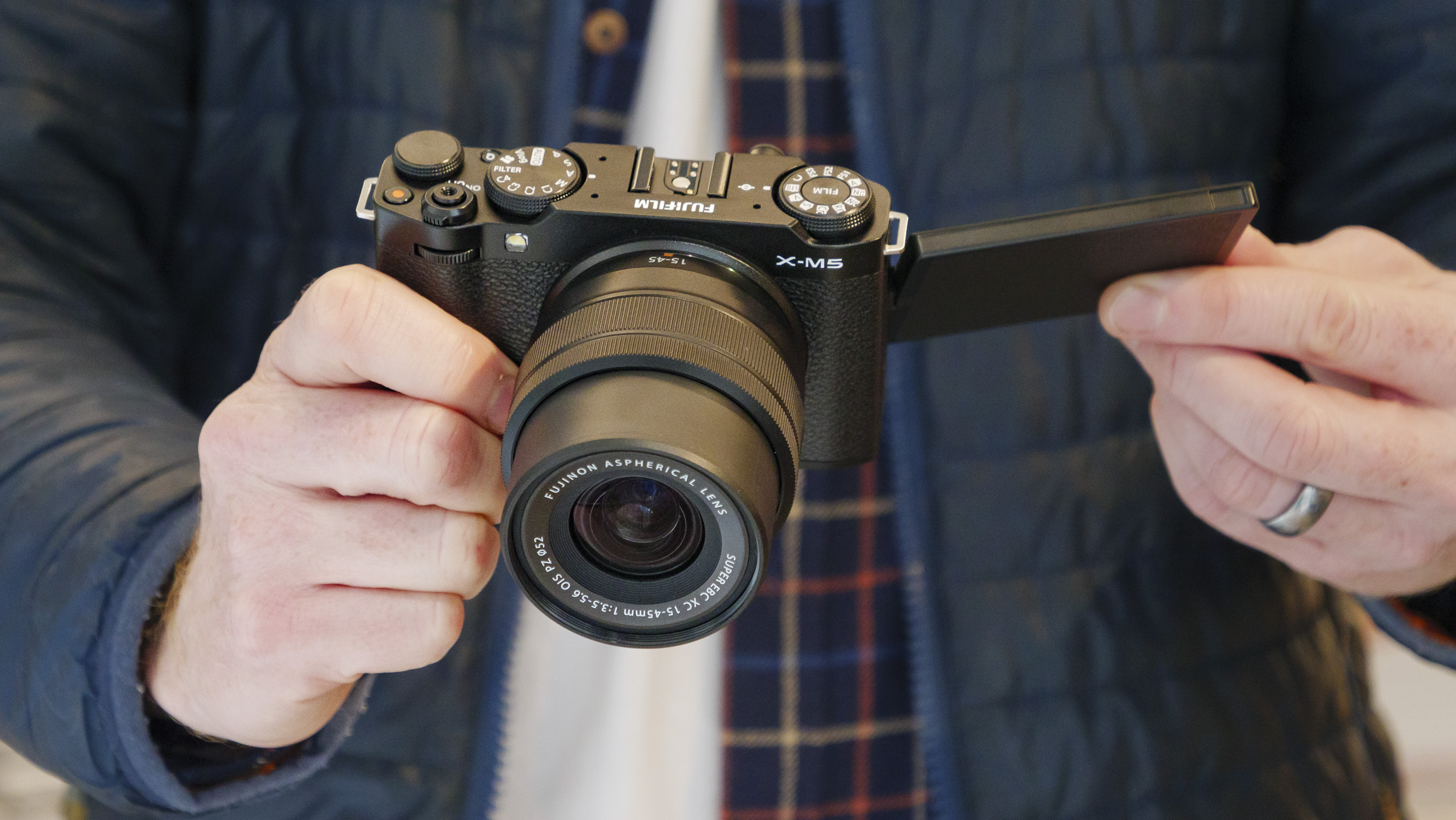
How to choose the best Fujifilm camera
With so much variety in Fujifilm’s camera range, you’re faced with a lot of choice when deciding which one to buy. That’s a good thing, because it means there’s almost certain to be a Fujifilm camera that fits your requirements. But it can also make things tricky, because there are similarities between several models.
Use-case
When considering which Fujifilm camera to buy, there are three key things to consider: price, proficiency and purpose. How much are you willing to spend, how experienced are you and what do you want to use your new Fujifilm camera for? Keep these three factors in mind as you read the guide above and they should steer you in the right direction. You can also break it down further.
Design
Start with the design. Thinking about your experience and what you plan to do with your camera, do you want something compact and travel-friendly, like the X100VI, or would you prefer the handling of something slightly larger, such as the X-T5? If you’re a pro, you might be prepared to work with the heft of the medium-format GFX100 II.
Sensor
When it comes to sensor size, Fujifilm doesn’t do full-frame. Apart from the GFX100 II (and GFX100S models in the also consider section), every camera above has an APS-C sensor. While that makes your decision easier in some respects, it also means you need to focus on other factors when choosing which Fujifilm camera is best for you.
Video
Think again about how you intend to use your new camera. Will you shoot only stills, mainly video, or a combination of the two? The X-M5 is a fantastic entry-level choice with a strong set of video skills, but the absence of a viewfinder will probably discourage photographers. For enthusiasts, the X-S20 offers a compelling hybrid blend.
Viewfinder
If you’re mainly focused on photography, you’ll probably want a Fujifilm camera with a viewfinder. Certain models feature Fujifilm’s unique hybrid viewfinder: both the X100VI and X-Pro3 can switch between optical and electronic, giving you the best of both worlds. Others have purely electronic OLED viewfinders, like the X-T5.
Performance
Most of the cameras in the list above benefit from Fujifilm’s latest 425-point hybrid autofocus system, together with subject detection autofocus. If you like to shoot action, you’ll want to keep burst speeds and buffer depth in mind. With its stacked sensor, the X-H2S is the Fujifilm camera to beat for outright pace.
Value
If value matters most, the X-T50 offers a strong set of specifications at a reasonable price. You can also find good deals on older Fujifilm cameras, if you don’t need the very latest specs. Take a look at the X-T4, which can be found at affordable second-hand rates online.
Meet the team
Our reviews team is a who's who of camera experts, with a huge amount of in-depth testing experience between them. Having covered the latest and greatest cameras of the last 20 years, including all of the best Fujifilm cameras, they know what separates a great Fuji camera from a good one.

Tim is TechRadar's Cameras Editor and has been cutting his teeth in the photo and video industry for almost 20 years. He looks after all of TechRadar's cameras content, covering buying guides, features, reviews and news. He knows the benefits of purposeful creativity with a dedicated camera instead of a smartphone. Reviewing the X100VI in Japan was one of his highlights for 2024.

Mark is TechRadar's Senior news editor and has been a technology journalist since 2004. Formerly Trusted Reviews and TechRadar's cameras editor, Mark has tested cameras over many years from all of the leading brands. He is also the happy owner of a Fujifilm X-T5.

James Abbott is a professional photographer and freelance photography journalist. He contributes articles about photography, cameras and drones to a wide range of magazines and websites where he applies a wealth of experience to testing the latest photographic tech.
How we test Fujifilm cameras
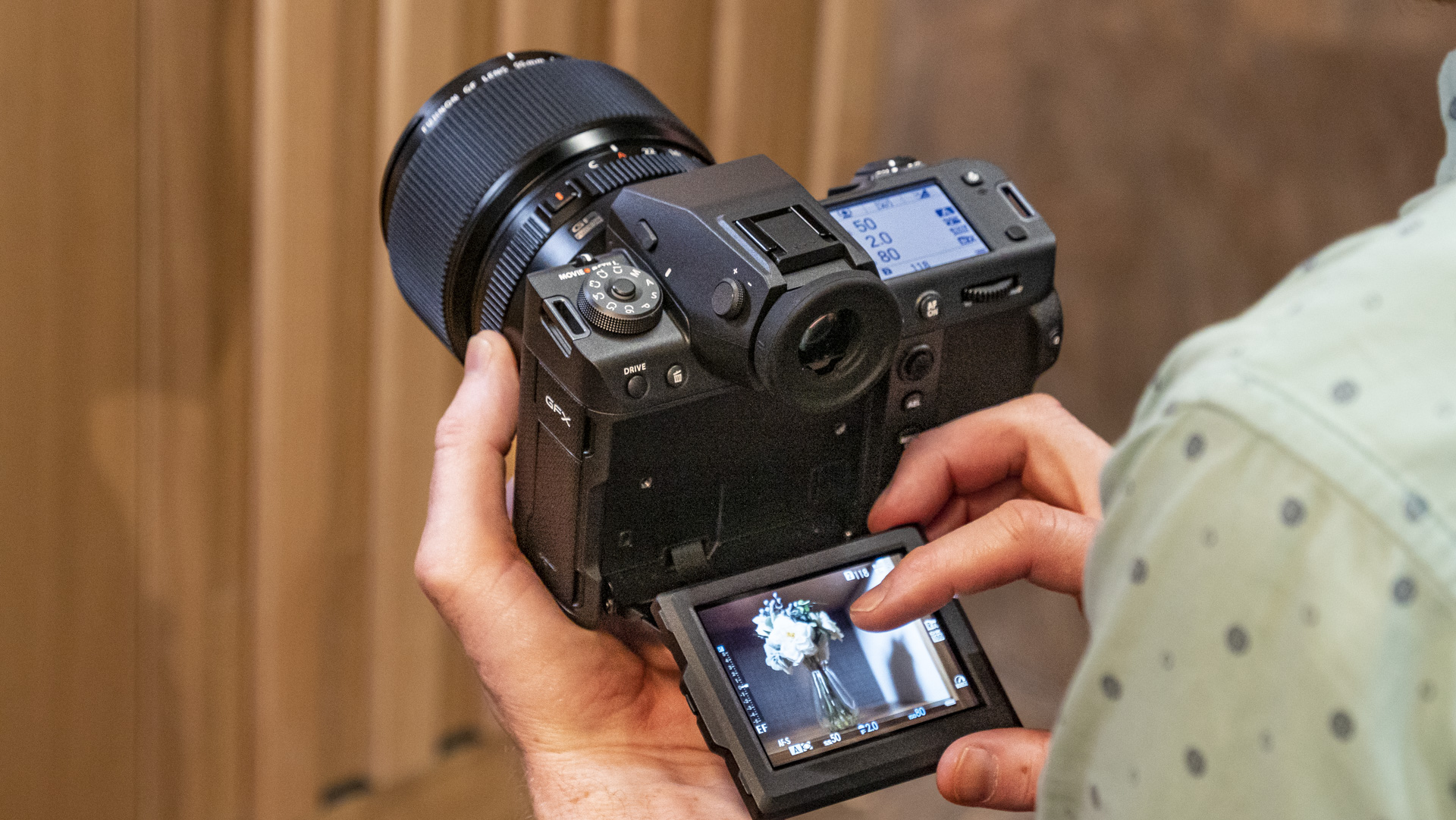
☑️ 100s of cameras reviewed
☑️ 15 years of product testing
☑️ Over 16,000 products reviewed in total
☑️ Nearly 200,000 hours testing tech
We test the best Fujifilm cameras in the same way that we test every camera: in real-world conditions. You won’t be shooting with your Fujifilm camera in a lab, so neither do we. Instead, we live and shoot with each camera over the course of several weeks, to gain a genuine understanding of each model’s character and performance in the kind of conditions most users will encounter.
That starts with a camera’s handling, design and controls. We shoot with each camera in a range of conditions, from studio to street, to get a feel for how it sits in the hand. We’ll keep in mind who and what the camera is designed for: with a premium compact like the X100VI, we think about how portable it is, as well as how easy it is for beginners to use; for a performance flagship like the GFX100 II, we consider the durability and the placement of controls for pro users.
There are standard tests we carry out for every Fujifilm camera, regardless of its target market. That includes shooting scenes in various lighting conditions, to assess ISO performance and noise handling. We’ll shoot a range of subjects to check each camera’s autofocus abilities, including fast-moving action which really pushes any detection and tracking modes. We’ll also shoot a range of image styles, including landscapes, portraits and close-ups, in both RAW and JPEG, to assess image quality and metering.
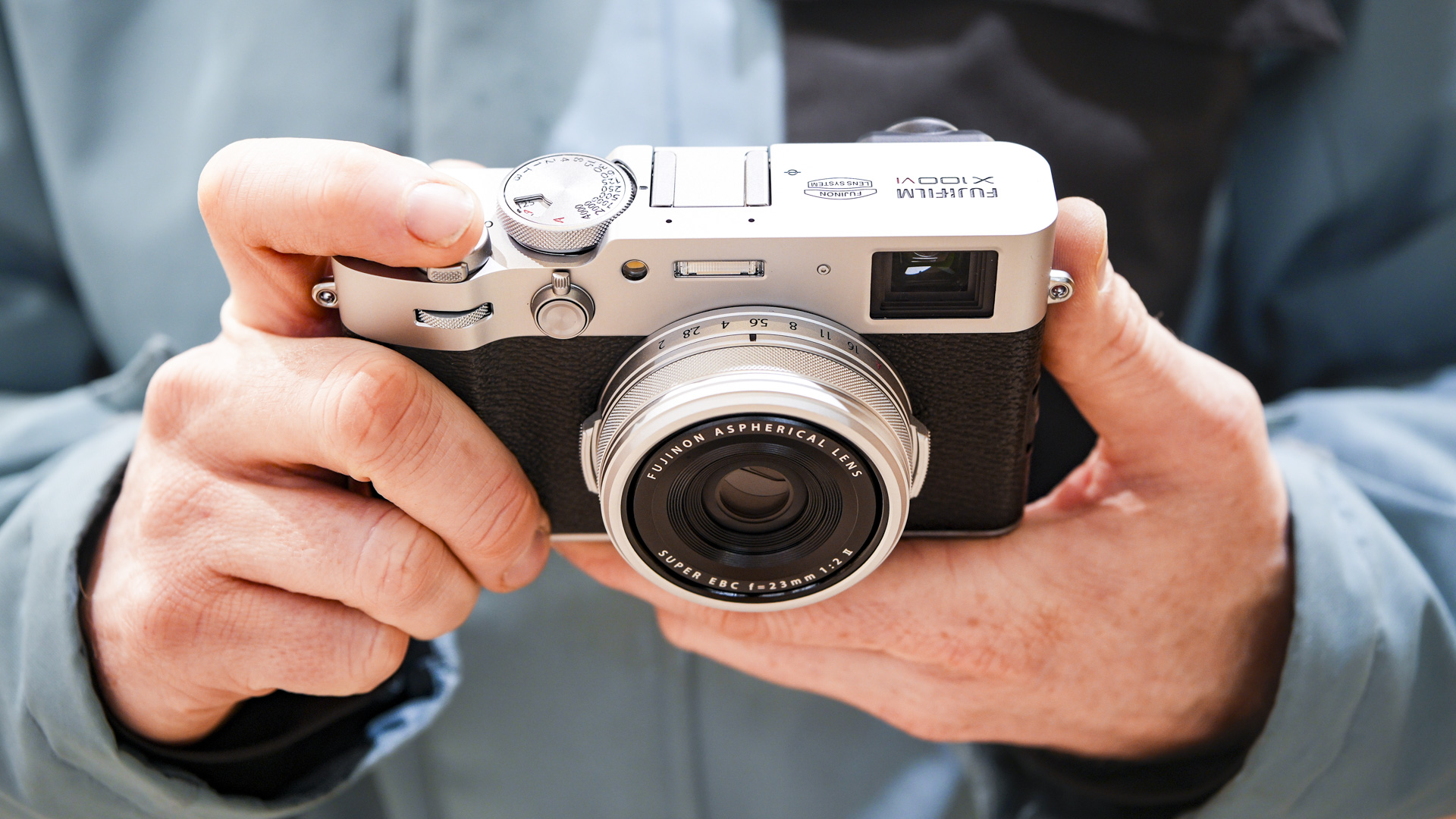
We’ll also do the same for footage, capturing video clips in different settings, at different resolutions and frame rates. For Fujifilm hybrids, such as the X-M5 and X-S20, we’ll take extra time to test features designed for content creators and videographers, including vlogging modes and color profiles. For Fujifilm cameras with in-body image stabilization, we’ll shoot and record handheld to see how well this performs, for both stills and video.
We also pay close attention to any numbers mentioned by Fujifilm in its marketing, including battery life and burst speeds. The former can often differ in reality from what’s claimed on paper, which is why we run each camera through several charge cycles, shooting until its cell is empty to get a realistic idea of efficiency. We also fire off a number of bursts, to test continuous shooting rates and how quickly we run into the buffer.
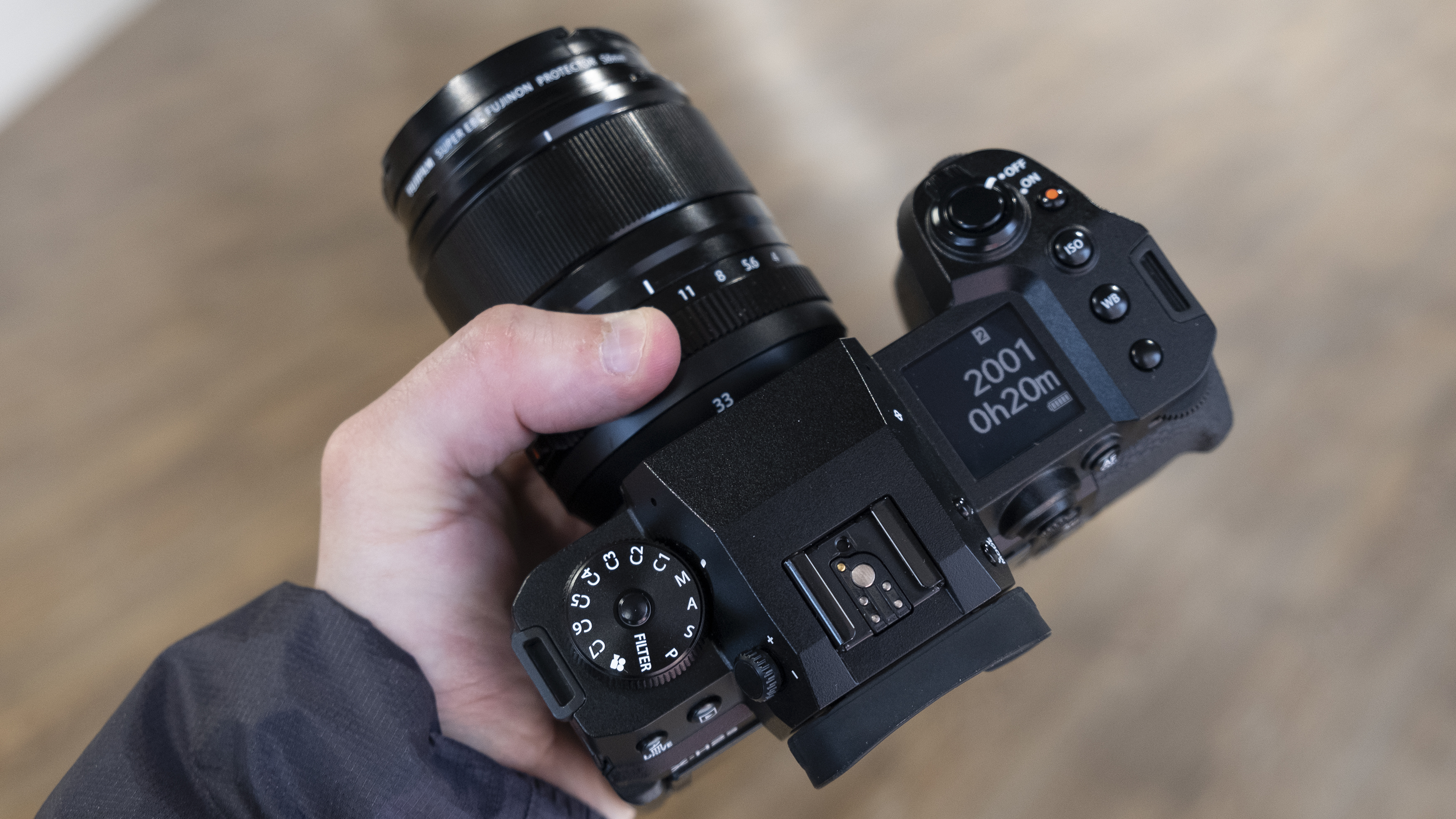
We run these tests for every Fujifilm camera that we get our hands on. While our assessments are objective, our conclusions are also colored by the price and market for the camera in question. We’ll have higher expectations of a top-flight Fujifilm camera than an entry-level model. If a camera is pitched for a specific purpose, we’ll also expect it to excel in that area – and test it accordingly. The X-H2S, for example, is designed to cover rapid action, so we made sure to shoot plenty of sports and wildlife with it.
Once we’ve finished, we collate everything that we’ve learned from our tests to reach a final verdict. We factor in the overall value offered by a camera, as well as any alternatives on the market, both within the Fujifilm stable and from other manufacturers within the same category. We’ll also keep older Fuji models in mind as a price and performance comparison, including second-hand models.
You might also like...
Get daily insight, inspiration and deals in your inbox
Sign up for breaking news, reviews, opinion, top tech deals, and more.

Tim is the Cameras editor at TechRadar. He has enjoyed more than 15 years in the photo video industry with most of those in the world of tech journalism. During his time as Deputy Technical Editor with Amateur Photographer, as a freelancer and consequently editor at Tech Radar, Tim has developed a deeply technical knowledge and practical experience with cameras, educating others through news, reviews and features. He’s also worked in video production for Studio 44 with clients including Canon, and volunteers his spare time to consult a non-profit, diverse stories team based in Nairobi. Tim is curious, a keen creative, avid footballer and runner, and moderate flat white drinker who has lived in Kenya and believes we have much to enjoy and learn from each other.